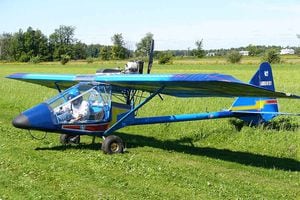Pilot took evasive action in Shifnal forced landing
A pilot had to take evasive action after his propeller failed and his plane crash into a hedge, an investigation has revealed.

The 32-year-old experienced severe vibration and was forced to land in a field near Shifnal Airfield.
He overran into a hedge and caused extensive damage to his aircraft but escaped unhurt.
A report by Air Accidents Investigation Branch revealed it was possible that damage to the propeller may have been responsible for the vibration, which caused the crash.
The pilot, who only had 64 hours experience in the cockpit before the accident, was practising circuits before the problems started.
The report stated the engine had recently been fitted with a new crankshaft but the pilot had run it to the manufacturer's instructions.
He performed two approaches to the airfield's runway 18 in his Kolb Twinstar MKIII before landing and backtracking to take off again on August 21.
After climbing to 500 feet he reduced power to cruise but then heard a "rough noise" coming from area of the engine.
The report states: "This was accompanied by a violent vibration throughout the airframe.
"The pilot looked for his options to carry out a forced landing, being somewhat limited by the presence of several sets of power cables.
"Eventually, he chose a field and touched down in it. Unfortunately, his ground speed was too high and he realised that he would collide with a wooden fence at the end and so he tried to climb over it.
"There was insufficient energy to clear the fence, which was struck by the main landing gear wheels, and the aircraft came to a halt in a hedge further on.
"In addition to the extensive damage to the airframe, the pilot later observed that two of the three propeller blades had been damaged.
"One was missing a few millimetres of its tip and the other blade had started to delaminate at the tip.
"He believes that if either damage had pre-existed the landing, then that might explain the vibration.
"In addition, he noticed the starter motor mounting flange had a piece missing.
"Again, he was uncertain whether this piece may have been liberated in flight and struck the propeller, or occurred as a result of the accident."





